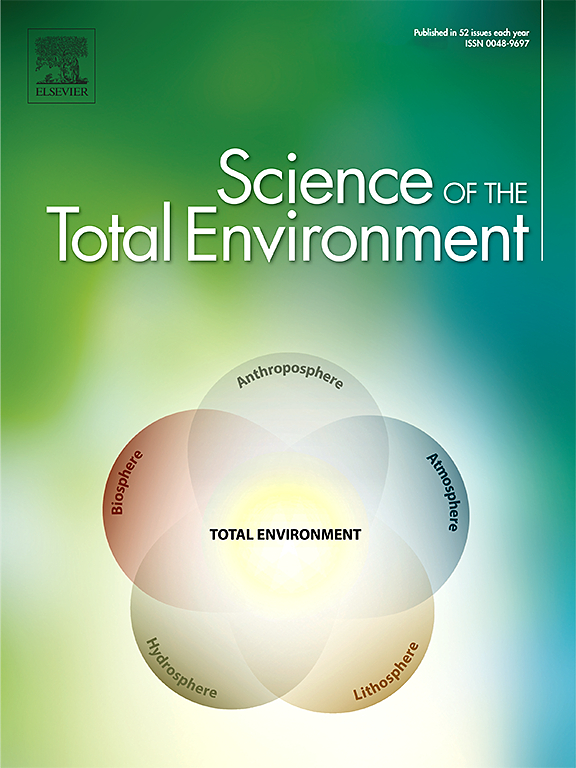Uncertainty analysis and parameter optimization of a water yield ecosystem service model: A case study of the Qilian Mountains, China
IF 8.2
1区 环境科学与生态学
Q1 ENVIRONMENTAL SCIENCES
引用次数: 0
Abstract
Integrating accurate outcomes of ecosystem service assessments into decision analysis is crucial for an efficient environmental management. However, there are still gaps in our knowledge about estimating and reducing parameter uncertainty in ecosystem service assessments. These gaps may affect the reliability of assessment results and potentially lead to bias or even errors in decision-making. Our study conducted an uncertainty analysis and parameter optimization of the InVEST water yield model in the Qilian Mountains region. We identified sensitive parameters using a global sensitivity analysis and quantified the associated uncertainty using the Monte Carlo method. To optimize these parameters, we applied the Markov chain Monte Carlo method using runoff data from 2006 to 2018 in the trial subbasins. Additionally, we validated the robustness of the optimized parameters in other additional subbasins using runoff data from 2008 to 2018. The results revealed that parameters related to climatic factors (such as annual precipitation and annual reference evapotranspiration) were more sensitive than those influenced by both climate and human activities (such as the vegetation evapotranspiration coefficient). The uncertainty associated with the sensitive parameters was nearly equal to that associated with all the parameters combined, indicating that these sensitive parameters were the primary sources of overall uncertainty. Moreover, the estimated water yields obtained via the optimized parameters were generally closely related to the runoff data from the trial subbasins, especially the China meteorological forcing dataset/Penman–Monteith combination, which achieved an average Nash-Sutcliffe efficiency of 0.71. Additionally, validation in other subbasins confirmed the robustness and transferability of the optimized parameters. Nevertheless, the source and accuracy of these sensitive parameters are critical, and further validation in other regions is needed. This work underscores the importance of rigorous uncertainty analysis and parameter optimization in improving ecosystem service assessments for better decision-making.

水量生态系统服务模式的不确定性分析与参数优化——以祁连山为例
将生态系统服务评价的准确结果整合到决策分析中,对有效的环境管理至关重要。然而,我们对生态系统服务评估中参数不确定性的估计和降低的认识仍然存在差距。这些差距可能会影响评估结果的可靠性,并可能导致决策偏差甚至错误。本研究对祁连山地区InVEST产水量模型进行了不确定性分析和参数优化。我们使用全局灵敏度分析确定敏感参数,并使用蒙特卡罗方法量化相关的不确定性。为了优化这些参数,我们利用2006 - 2018年试验子流域的径流数据,应用马尔可夫链蒙特卡罗方法。此外,我们还利用2008 - 2018年的径流数据验证了优化参数在其他附加子流域的稳健性。结果表明,与气候因子相关的参数(如年降水量和年参考蒸散发)比受气候和人类活动共同影响的参数(如植被蒸散发系数)更敏感。与敏感参数相关的不确定度几乎等于所有参数的总和,表明这些敏感参数是总体不确定度的主要来源。通过优化参数估算的产水量与试验子流域径流数据基本吻合,尤其是中国气象强迫数据集/ Penman-Monteith组合,其平均Nash-Sutcliffe效率为0.71。此外,在其他子盆地的验证证实了优化参数的鲁棒性和可转移性。然而,这些敏感参数的来源和准确性至关重要,需要在其他地区进一步验证。这项工作强调了严格的不确定性分析和参数优化对于改善生态系统服务评估以更好地决策的重要性。
本文章由计算机程序翻译,如有差异,请以英文原文为准。
求助全文
约1分钟内获得全文
求助全文
来源期刊

Science of the Total Environment
环境科学-环境科学
CiteScore
17.60
自引率
10.20%
发文量
8726
审稿时长
2.4 months
期刊介绍:
The Science of the Total Environment is an international journal dedicated to scientific research on the environment and its interaction with humanity. It covers a wide range of disciplines and seeks to publish innovative, hypothesis-driven, and impactful research that explores the entire environment, including the atmosphere, lithosphere, hydrosphere, biosphere, and anthroposphere.
The journal's updated Aims & Scope emphasizes the importance of interdisciplinary environmental research with broad impact. Priority is given to studies that advance fundamental understanding and explore the interconnectedness of multiple environmental spheres. Field studies are preferred, while laboratory experiments must demonstrate significant methodological advancements or mechanistic insights with direct relevance to the environment.
 求助内容:
求助内容: 应助结果提醒方式:
应助结果提醒方式:


